
Tragedy Strikes in VOR
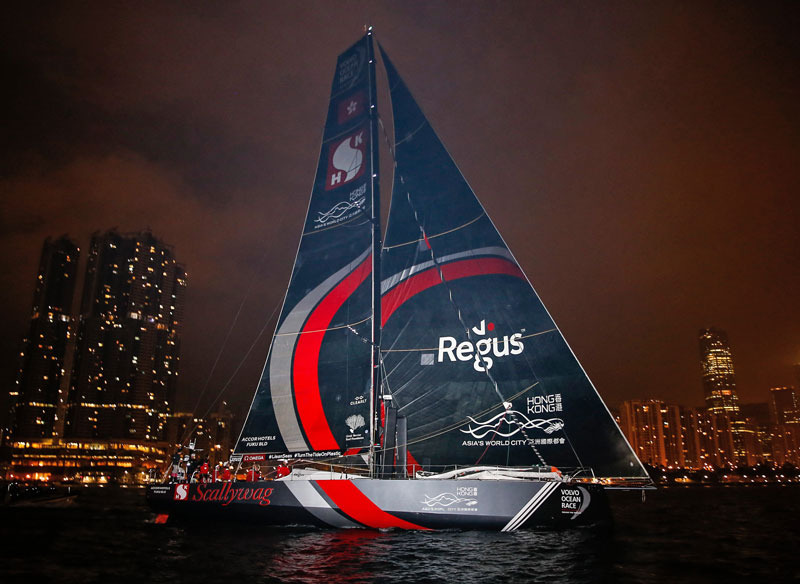
span.s1 {font-kerning: none}
The Sun Hung Kai/Scallywag team won Leg 4 of the Volvo Ocean Race in Hong Kong on Friday.
When the bulk of the Volvo Ocean Race fleet descended on Hong Kong on the early hours of Saturday morning, there was much reason for celebration. Local entry Sun Hung Kai/Scallywag’s fortunes had turned. A lucky break when exiting the doldrums meant that they reached the breeze first and had pulled out to a commanding lead en route to winning their first leg of the VOR. Fellow Chinese entry Dongfeng had fought hard and was poised to finish on the podium in third place, behind Vestas/11th Hour Racing. Tragedy struck however, when second-placed Vestas/11th Hour Racing was approximately 30 miles from the finish line.
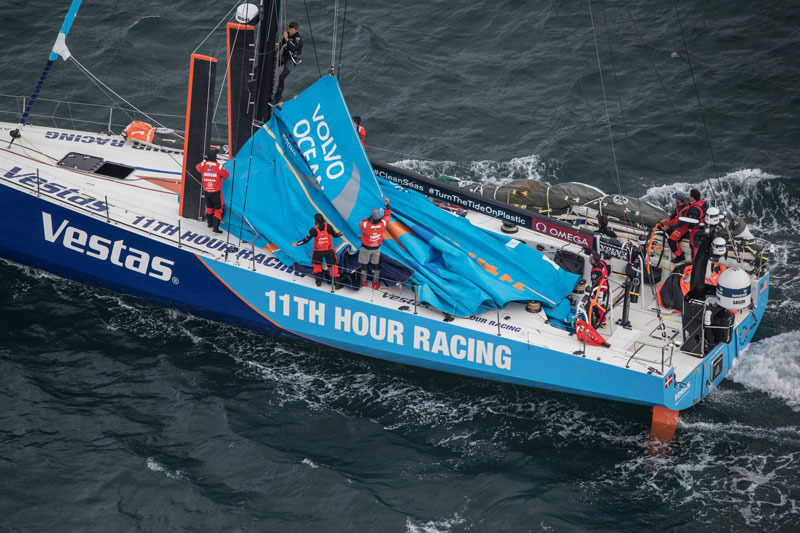
The Danish/American entry collided with a fishing boat at around 2 a.m. local time while sailing at 20 knots of boat speed in 20 knots of breeze, sinking the fishing boat. In the pre-dawn hours, the team sailed a back-and-forth downwind zig-zag pattern, which can be clearly seen on the tracker. With 10 bodies in the water, it was nothing short of a miracle that Vestas/11th Hour Racing was able to recover all of the fishermen. Tragically however, one of the fishermen perished as a result of the incident. While his exact time of death is uncertain — we don’t know whether he was even alive when he was plucked from the water, or when he was airlifted from the deck of Vestas/11th Hour by a helicopter — the result remains the same: When the Volvo Ocean Race fleet sailed into Hong Kong, a fishing boat was sunk, and a life was lost.
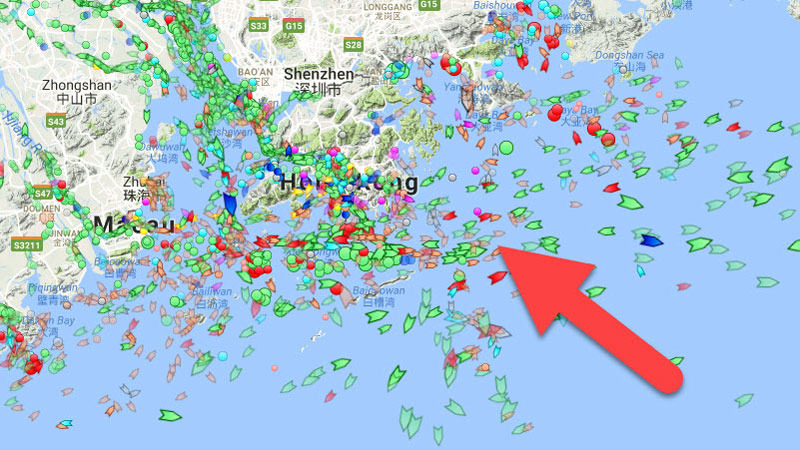
While the racing crew reported no injuries and that all were safe onboard, their Volvo 65 monohull did sustain damage, with a large hole in the port bow. Retiring from the leg, the Vestas/11th Hour team canted the keel to starboard to heel the boat and then motored to the finish line. Many details of the incident are still unknown to the public at this time, and there’s plenty of red tape involved with the loss of life and requisite investigation by the Hong Kong Police and Maritime Authority. Our most sincere condolences go out to the families of the fishermen, the Vestas/11th Hour Racing team and all involved.
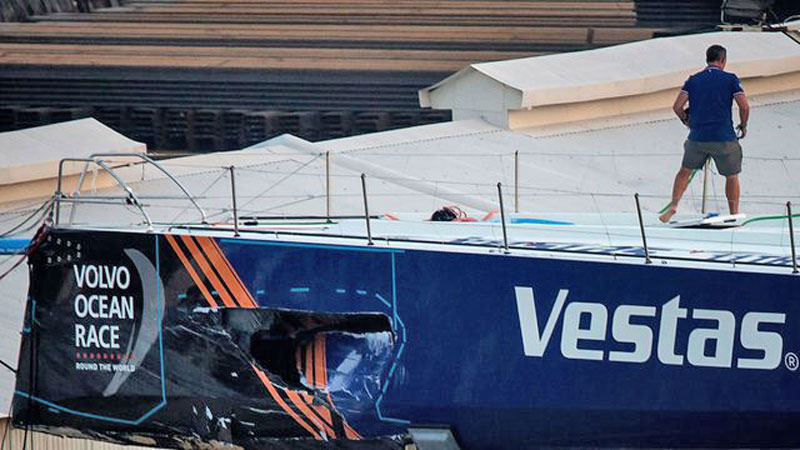
With Vestas’ retirement, Dongfeng moved up to second place to make it a Chinese boat 1-2 with AkzoNobel third and race leader MAPRE in fourth. Brunel barely managed to hold off Turn the Tide on Plastic. The fleet will sail a ‘transitional leg’ from Hong Kong to nearby Guangzhou (Canton) in Southern China for a full stopover, where each team will be awarded one point before sailing back to Hong Kong. On February 7, the fleet will begin a 6,100-mile leg from Hong Kong to Auckland, another tactically challenging and long leg. There is no word yet on whether Vestas/11th Hour Racing will depart Hong Kong with the rest of the fleet as there are repairs to be done to the boat, as well as pending legal matters.
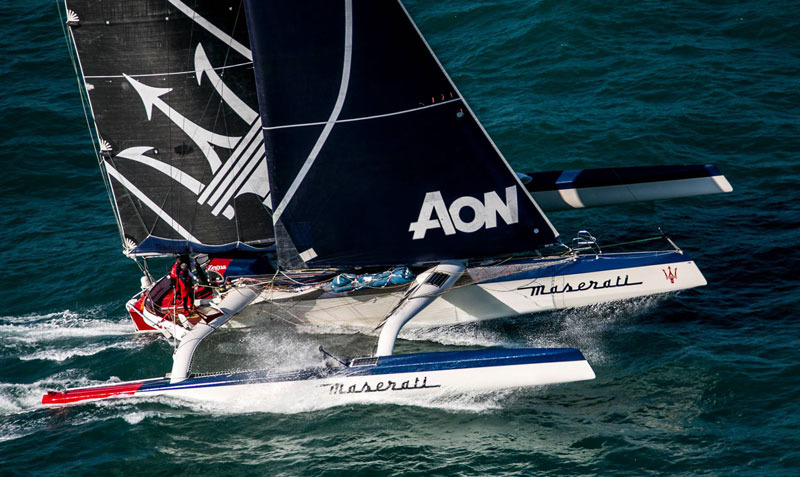
©Latitude 38 Media, LLC
Departing Hong Kong just days before the Volvo Ocean Race fleet sailed in, our old friends on Giovanni Soldini’s MOD 70 Maserati are currently underway in their quest to break Gitana 13’s ‘Tea Trade’ record from Hong Kong to London. Just over four days into the attempt, the team has gotten off to a cracking start and is more than 500 miles in advance of record pace. Having just crossed the equator, the Italian trimaran is currently approaching the Sunda Strait in Indonesia, which will dump them into the Indian Ocean and beyond.
Westpoint Harbor Woes, Again
On Thursday, January 18 Mark Sanders and Westpoint Harbor once again squared off against the Enforcement Committee of the Bay Conservation and Development Commission (BCDC). Although the Enforcement Committee voted 5-0 in November 2017 to refer their Cease and Desist Order (CDO) for consideration by the full Commission at the January 18 meeting, that order was withdrawn and replaced with a revised CDO on January 8, 2018.
However, prior to hearing public comments on the new CDO at the January 18 meeting, the Enforcement Committee retreated to private session, and announced upon their return that the new CDO was being withdrawn, the prior CDO was being reinstated, and no additional public comments would be allowed.
This announcement did not sit well with the almost 50 people attending the hearing who had planned to speak on behalf of Westpoint Marina. According to one observer, "Near riot conditions ensued. People were shouting, the Chair was calling for order, and a representative of the Attorney General’s office had to intervene." Under pressure from those in attendance, the Committee ultimately agreed to allow comments, and about 20 people eventually spoke.
These comments did not have an impact on the outcome of the hearing. The Enforcement Committee voted 4-0 to once again refer the CDO that had been approved in November to the full Commission for consideration in February or March. So all that was really accomplished in this effort by the Executive Director to substitute the new CDO is that staff time at BCDC was wasted preparing a new order, Sanders and Westpoint Harbor were compelled to prepare new legal briefs — at significant cost, no doubt — and consideration of the CDO by the full Commission was delayed, thereby depriving all parties of any resolution of the dispute.
Since the decision to withdraw the new CDO was made in closed session, the reasons for making this change were not publicly discussed. However, it seems likely that the new order was prepared in response to the BCDC’s court loss in the Pt. Buckler decision, but that when the Enforcement Committee met to discuss the new order, Committee members realized that the new order had not been legally issued.
Whatever the reasons for withdrawing the new order, such disarray does not lend any kind of credibility to the proceedings. BCDC has alleged that the permit violations by Sanders and Westpoint harbor are so egregious that they warrant more than a half million dollars in fines. These ‘egregious violations’ will presumably continue — because if the presumed violations had been corrected there would be no need for enforcement — until the full Commission rules on the case, thereby subjecting the public to a continuance of the ‘harm’ that BCDC alleges is being caused by Sanders and Westpoint Harbor. Either the violations are egregious, in which case they should be dealt with right now, or they are not, and the entire enforcement action is nothing more than a shakedown operation.
For more information about the January 18 hearing, go to www.bcdc.ca.gov and look under the Public Meetings tab, or go to www.westpointharbor.com.
Almost 4,000 people have signed this petition in support of Westpoint Marina. What do you think?
A Quick Midwinters Roundup
While the surf was going off at Mavericks, Bay racers were battling another natural nemesis: excess calm. But despite fluky winds and challenging currents on both days of the Corinthian Midwinters, the club managed to get a race off each day, and the majority of the fleet managed to cross the finish line before time ran out.
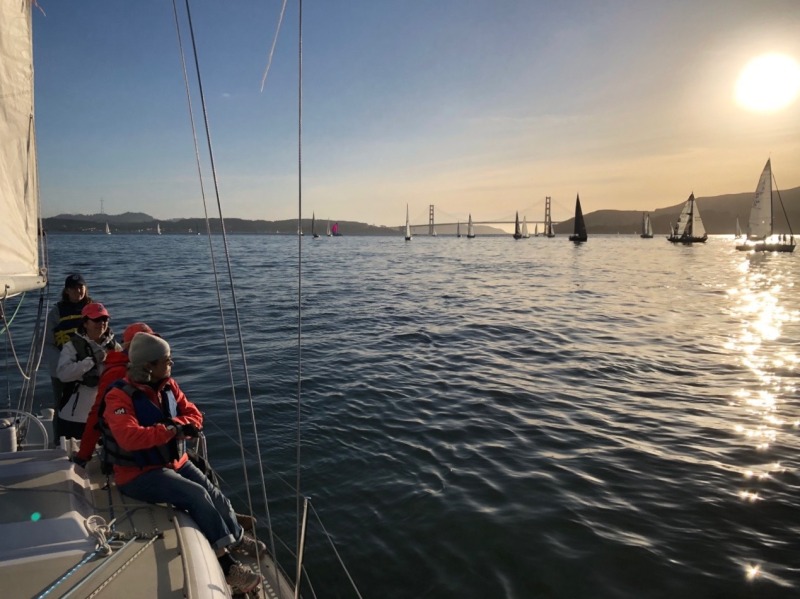
©2018Latitude 38 Media, LLC
On Saturday — with sunshine and pleasant winds predicted and flood turning to ebb on both days — there was hope for a simple, slow sail around the course. The sun appeared but the breeze didn’t. The race committee got two starts off before calling for a postponement and, after some waiting, got the rest of the fleets off. While the faster boats finished in ample time, the remaining fleets approached both the finish line and the 4:30 time limit against a strong ebb with vanishing wind. After a long afternoon getting so close to both the line and the time limit, most chose to wait and pray to the wind gods hoping for a breeze to take them home. And the wind gods listened, providing breeze for over 40 boats to finish between 4:10 and 4:30 with JEB Pickett aboard the S&S 30 Nymph slipping in at 4:29:16. Safe!
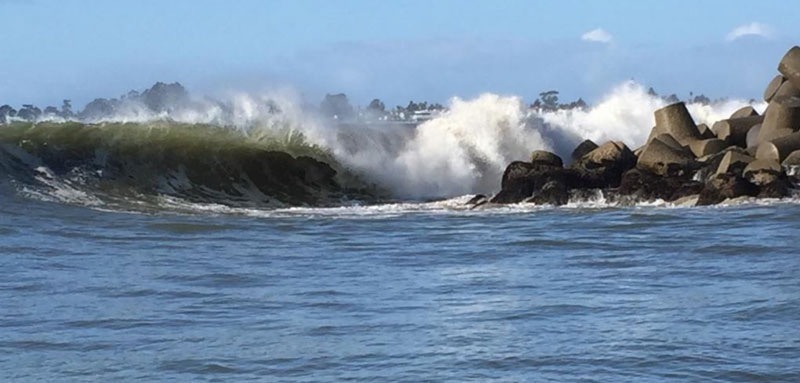
Sunday’s prediction for light air was right on target. At start time, there was a light southerly blowing, so, to add some excitement, the race committee opted for a downwind start, creating a fresh challenge in an otherwise unchallenging breeze. Everyone headed north to round the Sausalito entrance buoy before heading back to the Bay to take on the currents and an easterly battling a westerly with a large hole in the middle between the two.
Still, the majority of racers made it around the course, fell into holes but dug their way out again and managed to make the finish as the westerly established itself and brought most boats home. And it all happened before the evening showers arrived. The beauty of racing in fickle winds is that, over the course of the race, almost everyone has a chance to feel like they could be the winner until another wild card is dropped on the table, shuffling all the positions.
To see this weekend’s results, click here.
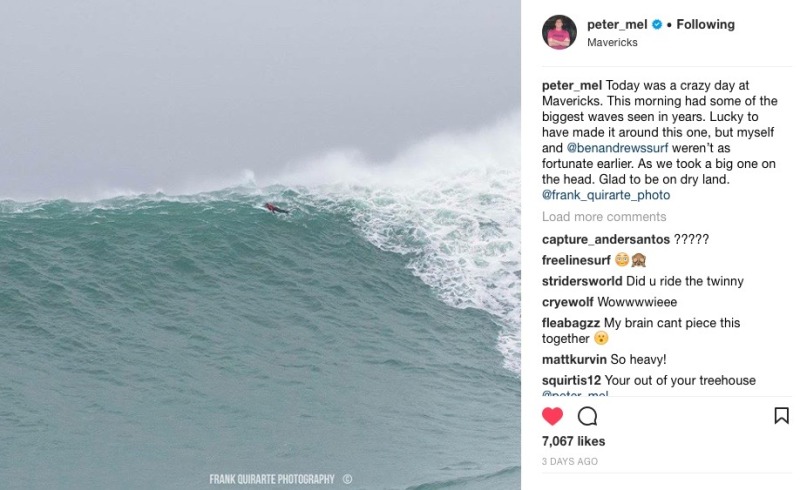
The Training Boat, Part 1
It was late summer and we met for lunch overlooking the Shelter Island yacht basin. The waitress took our order, and Phil cut to the chase: "So how’s this whole boat-owning thing working out for you?" Phil Kinnison is a yacht broker and knows well that boat ownership can bring grief, especially to an absentee owner like me. With life firmly rooted in the desert — Phoenix, Arizona — I owned a boat in San Diego. And Phil shared some responsibility for my situation. A year earlier he’d helped guide me to the purchase of that boat, hoping that it would suit my purposes.
My answer to Phil’s question was easy. "When I think of the best things that have ever happened in my life — putting myself through law school; my marriage; the birth of my son — buying this boat is right in there. I’m not sure how I would rank them from one to four, but this boat is on that list." Phil threw back his head in laughter, exclaiming "And it’s the one that will f—k up the other three!" Laughing along with his wry quip, I assured him nothing of the sort was going to happen with me.
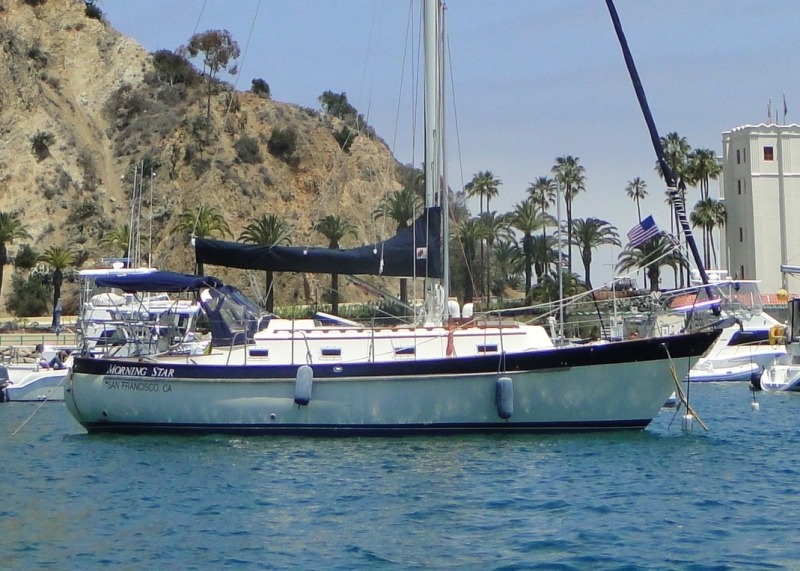
The sailing bug had bitten me long before I met Phil in my hunt for a boat to buy. For several years I sailed as often as possible — crewing in regattas on Lake Pleasant (a large artificial lake near Phoenix) and daysailing on rental boats out of San Diego. Each outing of this kind had something in common so basic that I scarcely recognized it: the sailing day always ended at the same dock from whence it had started.
Then in early 2005, I signed up for a four-day training excursion with Seaforth Boat Rental in Coronado, San Diego, to Catalina Island and back. It was a course covering the requirements for certifications in "Basic Coastal Cruising" and "Bareboat Chartering." I was eager for the experience and adventure as much as the certifications.
On the morning of day one, we set sail from Glorietta Bay Marina, on the west side of San Diego Bay. Heading north through the bay, under the San Diego-Coronado Bridge, we left the busy harbor and passed under the lee of Point Loma and out onto the North Pacific Ocean. Our instructor was Chuck Thrasher, a gregarious ex-Navy submariner with a US Coast Guard 50-ton master’s license. When not teaching sailing classes or chasing women, Captain Thrasher was a delivery skipper and dive-boat captain. His sea stories were far more memorable than the course work.
Through that first day of drills and lessons, we made our way some 40 nautical miles up the coast to the small boat harbor at Oceanside. Making landfall was the crowning teaching moment of the day. In the fading light of early evening, we strained to make out the blinking Morse Code "a" of the Oceanside sea buoy light. Locating the light at last, less than a mile away, we shaped course for the entrance between the breakwaters, and followed the channel markers into the harbor and to the public docks beneath lighted sign boards spelling out "Oceanside" on the overlooking bluff.
Long after we checked in with the harbor police, finished dinner, and tidied up the boat for the night, I lay in my bunk listening to the quiet sounds of the boat in the slip, reflecting on the day’s activities and accomplishments. I had never been to Oceanside before, and now I had made landfall there after a long day at sea. I was thrilled, astonished and supremely satisfied, and soon fell soundly asleep.
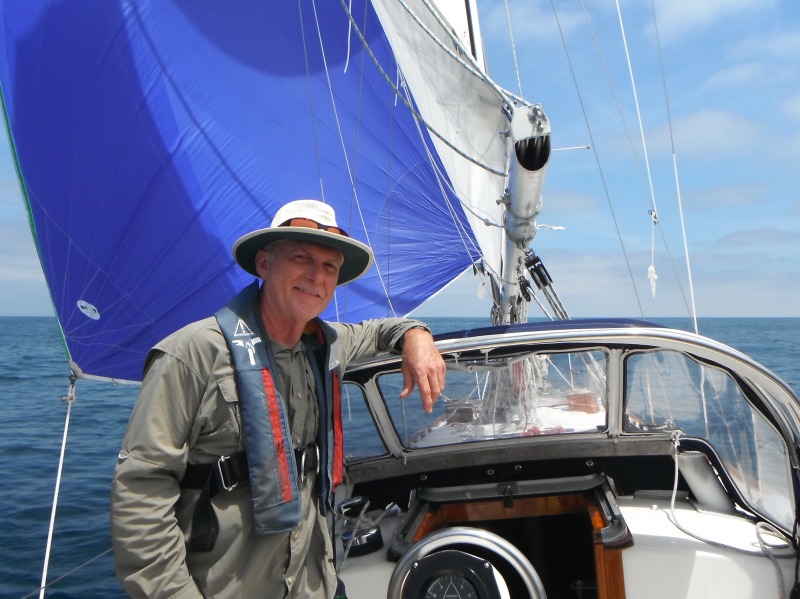
Day two we crossed the Gulf of Santa Catalina, picking up a mooring that night in Avalon Harbor. Day three we did anchoring and navigation drills in the waters around Catalina Island, and set out that afternoon for the return sail to San Diego. We anchored in Shelter Island Yacht Basin in the wee hours next morning, and after daybreak returned to the dock at Glorietta Bay. It was a thoroughly enjoyable, and very instructive course.
But the abiding impact of the outing was my realization that this kind of sailing — multi-day excursions on the ocean, where each day ended someplace other than where it had begun — was the kind of sailing I needed to be doing. And the idea of doing so via successive charters was not appealing. I wanted to be able to explore on my own terms, on my own boat, with or without crew. Moreover, I had long fantasized about sailing across oceans to distant ports. This coastal cruise brought that idea into sharper focus. I knew, however, that it would take a lot more experience in short and middle-distance cruising before the purchase of a bluewater boat would make sense. After all, I still didn’t know if owning a boat in another state would prove viable for me at all.
We’ll bring you part two of Lee Johnson’s Training Boat on Wednesday.
